Rare Silver Pocket Sundial and Compass by Michael Butterfield, Paris, circa 1700
£4,900
Request Information
Follow Us
Rare Silver Pocket Sundial and Compass by Michael Butterfield, Paris, circa 1700
A beautiful, rare solid silver Anglo-French octagonal pocket sundial with compass by Michael Butterfield, circa 1700.
The sundial is made for a latitude of 44° and could be used in places in the south of France such as Avignon and elsewhere along this parallel. The elaborately engraved base plate has a Roman chapter ring on which the gnomon (a triangular flap) casts its shadow. It is signed by the maker in the following manner: Butterfield A Paris. On one side is a glazed recessed compass with a blued steel hand to position the instrument in such a way that the time can be read. The hinged triangular gnomon is richly engraved and in the shape of a bird’s head. The folding gnomon and cut corners enable the dial to be carried in the pocket.
The underside shows the latitudes of various Southern-French places in the relevant areas
Its maker Michael Butterfield was an English instrument maker who based himself in ‘Le Quay de l’Horloge’ of Paris from circa 1685. These types of dials, often replicated by other makers, became known as Butterfield Dials after their original inventor.
They were a fashionable and functional traveller’s accessory from the late 17th century onwards. Interestingly, early watches did not keep time particularly well and a dial such as this were used to regularly set a watch. Anecdotally, sundials may also have been preferred to sounding timepieces whilst on the road – the chimes being thought to attract thieves.
Similar examples can be found in the British Maritime Museum, V&A and the British Museum.
Condition
Wear consistent with age and use.
Dimensions
Height: 2.56 in. (6.5 cm)
Width: 2.29 in. (5.8 cm)
Depth: 0.4 in. (1 cm)
Literature
Tardy, Dictionnaire des horlogers français, Paris, 1971, p. 103
C. Cowham, A Dial in Your Poke, Cambridge, 2004, passim
H.Higton, Sundials, An Illustrated History of Portable Dials, London, 2001, passim
PREVIOUSLY SOLD
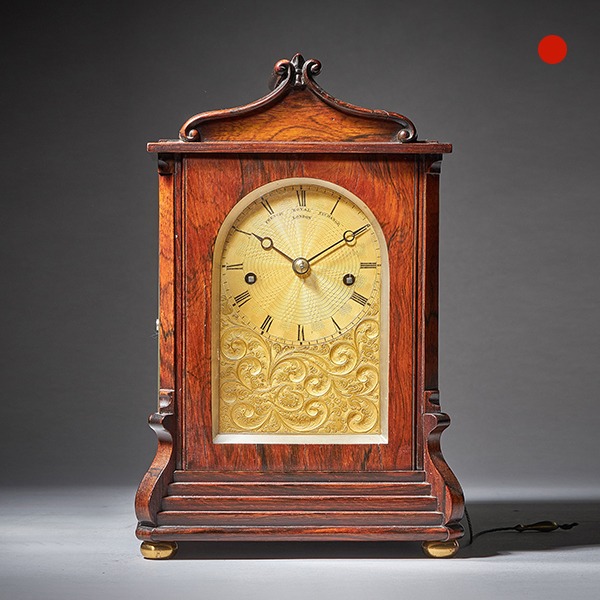
Striking George IV Eight-Day Rosewood Pagoda Library Clock by French, London
Striking George IV Eight-Day Rosewood Pagoda Library Clock by French, London Sold Follow UsStriking George IV Eight-Day Rosewood Pagoda Library Clock by French, London This lovely small library clock has a spring-driven eight-day twin...

18th Century George III Mahogany Quarter Striking Automation Bracket Clock By Stephen Rimbault
18th Century George III Mahogany Quarter Striking Automation Bracket Clock by Stephen Rimbault SoldFollow Us18th Century George III Mahogany Quarter Striking Automation Bracket Clock by Stephen Rimbault By Stephen Rimbault The impressive...
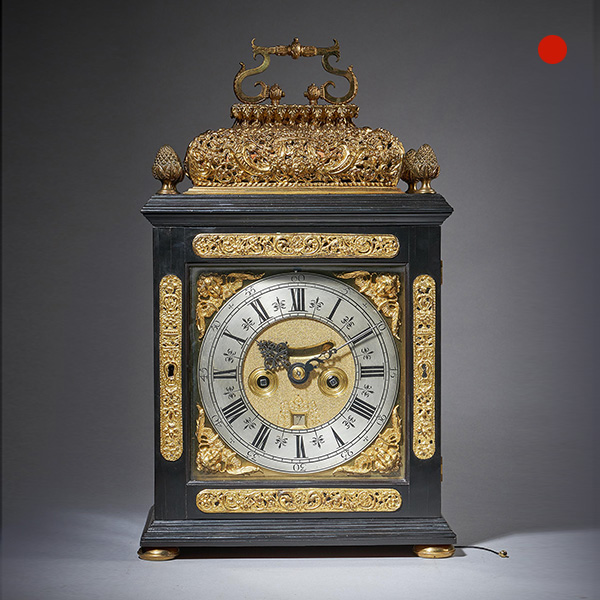
17th century William and Mary Ebony Eight-Day table clock by James Markwick
17th century William and Mary Ebony Eight-Day table clock by James Markwick Sold Follow Us17th century William and Mary Ebony Eight-Day table clock by James Markwick The elegantly proportioned ebony-veneered basket top case has fine cast...
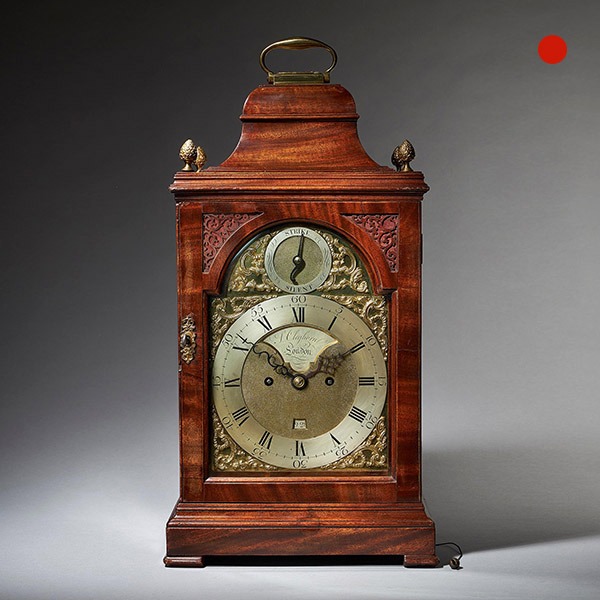
A Fine 18th Century Mahogany Eight Day Table Clock with Trip Quarter Repeat
A Fine 18th Century Mahogany Eight Day Table Clock with Trip Quarter Repeat SoldFollow UsA Fine 18th Century Mahogany Eight Day Table Clock with Trip Quarter Repeat An eighteenth-century English spring-driven mahogany table clock, signed on...
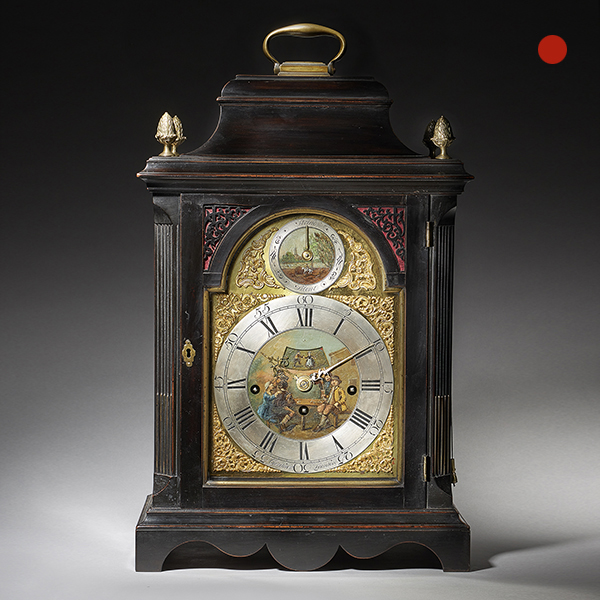
Extremely Rare George III 18th Century Quarter-Striking Bracket Clock
Extremely Rare George III 18th Century Quarter-Striking Bracket Clock SoldFollow UsExtremely Rare George III 18th Century Quarter-Striking Bracket Clock An extremely rare George III 18th century ebonized quarter-striking bracket clock by...
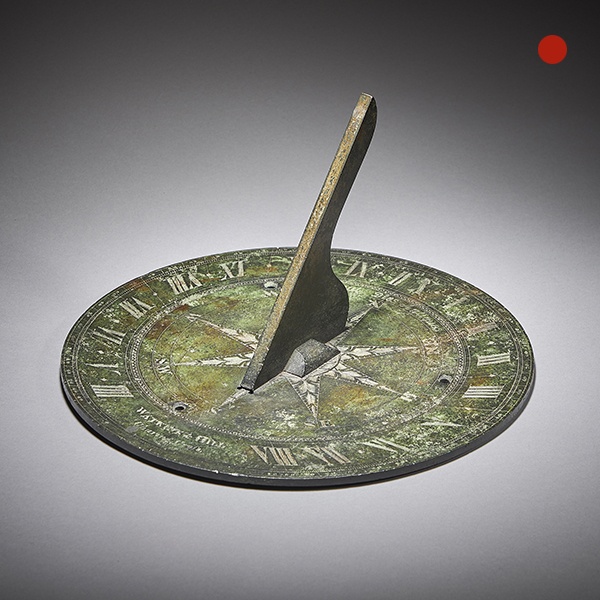
Rare 19th Century Bronze Horizontal Sundial by Watkins & Hill London
Rare 19th Century Bronze Horizontal Sundial by Watkins & Hill London £2,600 Follow UsRare 19th Century Bronze Horizontal Sundial by Watkins & Hill London A beautifully weathered circular bronze sundial by Watkins & Hill, first...

Striking George IV Eight-Day Rosewood Pagoda Library Clock by French, London
Striking George IV Eight-Day Rosewood Pagoda Library Clock by French, London Sold Follow UsStriking George IV Eight-Day Rosewood Pagoda Library Clock by French, London This lovely small library clock has a spring-driven eight-day twin...

18th Century George III Mahogany Quarter Striking Automation Bracket Clock By Stephen Rimbault
18th Century George III Mahogany Quarter Striking Automation Bracket Clock by Stephen Rimbault SoldFollow Us18th Century George III Mahogany Quarter Striking Automation Bracket Clock by Stephen Rimbault By Stephen Rimbault The impressive...

17th century William and Mary Ebony Eight-Day table clock by James Markwick
17th century William and Mary Ebony Eight-Day table clock by James Markwick Sold Follow Us17th century William and Mary Ebony Eight-Day table clock by James Markwick The elegantly proportioned ebony-veneered basket top case has fine cast...

A Fine 18th Century Mahogany Eight Day Table Clock with Trip Quarter Repeat
A Fine 18th Century Mahogany Eight Day Table Clock with Trip Quarter Repeat SoldFollow UsA Fine 18th Century Mahogany Eight Day Table Clock with Trip Quarter Repeat An eighteenth-century English spring-driven mahogany table clock, signed on...

Extremely Rare George III 18th Century Quarter-Striking Bracket Clock
Extremely Rare George III 18th Century Quarter-Striking Bracket Clock SoldFollow UsExtremely Rare George III 18th Century Quarter-Striking Bracket Clock An extremely rare George III 18th century ebonized quarter-striking bracket clock by...

Rare 19th Century Bronze Horizontal Sundial by Watkins & Hill London
Rare 19th Century Bronze Horizontal Sundial by Watkins & Hill London £2,600 Follow UsRare 19th Century Bronze Horizontal Sundial by Watkins & Hill London A beautifully weathered circular bronze sundial by Watkins & Hill, first...
YOU MAY ALSO LIKE

William and Mary 10 Inch Marquetry Longcase Clock by James Clowes, c. 1680
An Exceptional William and Mary 10 Inch Marquetry Longcase Clock by James Clowes, c. 1680 £26,900[wpforms_selector form_id="11387" show_title="on" _builder_version="4.23.1" _module_preset="default"...
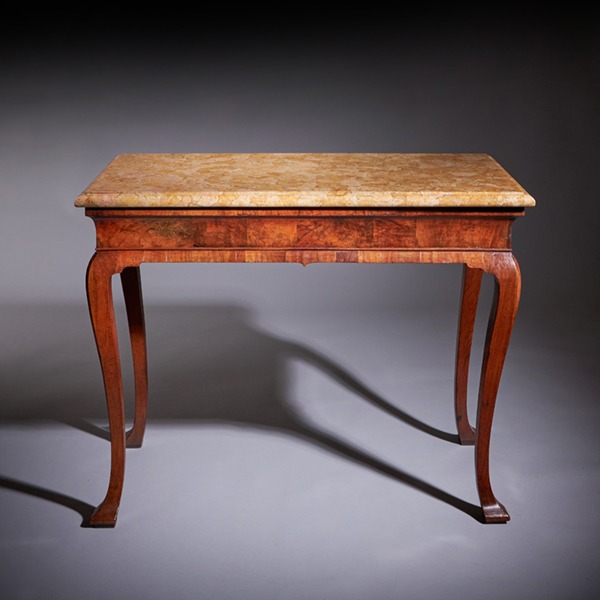
18th Century George II Figured Walnut Console Table, Sienna Brocatelle Marble
18th Century George II Figured Walnut Console Table, Sienna Brocatelle Marble £12,500Follow Us18th...
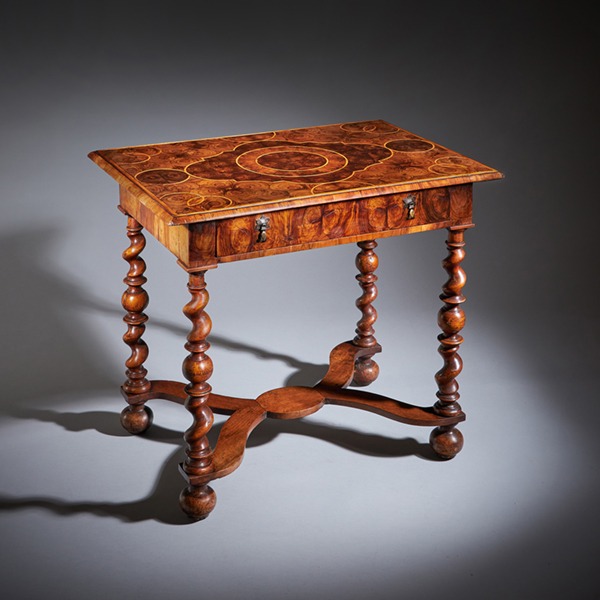
A Fine and Rare 17th Century William and Mary Olive Oyster Table, Circa 1680-1700. England
A Fine and Rare 17th Century William and Mary Olive Oyster Table, Circa 1680-1700. England £14,250[wpforms_selector form_id="11387" show_title="on" _builder_version="4.23.1" _module_preset="default"...
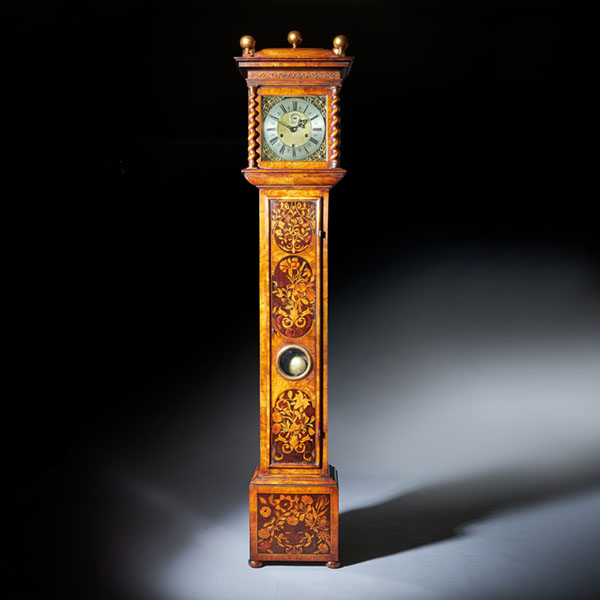
17th Century Charles II Month Going 10″ Marquetry Longcase Clock by John Wise
A superb Charles II month duration floral marquetry longcase clock by the well-known maker John Wise, c. 1680-85. Measure: 10" Follow UsA superb Charles II month duration floral marquetry longcase clock by the well-known maker John Wise, c....
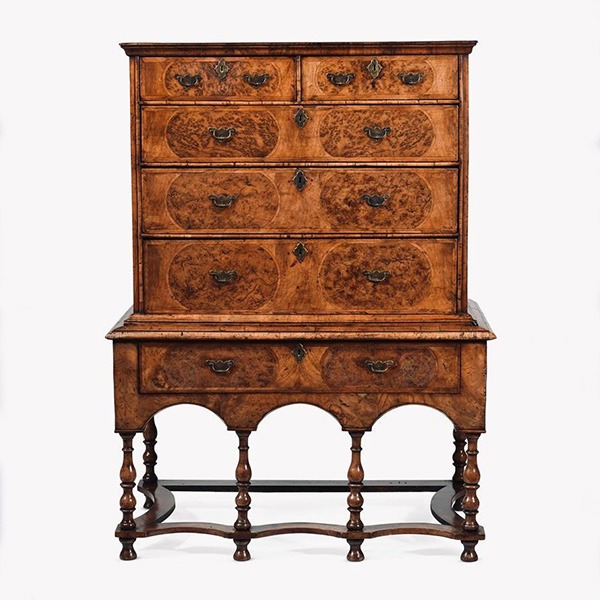
William and Mary 17th Century Walnut and Pollard Oak Chest on Stand
William and Mary 17th Century Walnut and Pollard Oak Chest on Stand £12,900Follow UsWilliam and...

A Rare 18th Century George II Carved Cut Gesso and Giltwood Mirror, Circa 1730
A Rare 18th Century George II Carved Cut Gesso and Giltwood Mirror, Circa 1730 £28,000Follow UsA...

William and Mary 10 Inch Marquetry Longcase Clock by James Clowes, c. 1680
An Exceptional William and Mary 10 Inch Marquetry Longcase Clock by James Clowes, c. 1680 £26,900[wpforms_selector form_id="11387" show_title="on" _builder_version="4.23.1" _module_preset="default"...

18th Century George II Figured Walnut Console Table, Sienna Brocatelle Marble
18th Century George II Figured Walnut Console Table, Sienna Brocatelle Marble £12,500Follow Us18th...

A Fine and Rare 17th Century William and Mary Olive Oyster Table, Circa 1680-1700. England
A Fine and Rare 17th Century William and Mary Olive Oyster Table, Circa 1680-1700. England £14,250[wpforms_selector form_id="11387" show_title="on" _builder_version="4.23.1" _module_preset="default"...

17th Century Charles II Month Going 10″ Marquetry Longcase Clock by John Wise
A superb Charles II month duration floral marquetry longcase clock by the well-known maker John Wise, c. 1680-85. Measure: 10" Follow UsA superb Charles II month duration floral marquetry longcase clock by the well-known maker John Wise, c....

William and Mary 17th Century Walnut and Pollard Oak Chest on Stand
William and Mary 17th Century Walnut and Pollard Oak Chest on Stand £12,900Follow UsWilliam and...

A Rare 18th Century George II Carved Cut Gesso and Giltwood Mirror, Circa 1730
A Rare 18th Century George II Carved Cut Gesso and Giltwood Mirror, Circa 1730 £28,000Follow UsA...






